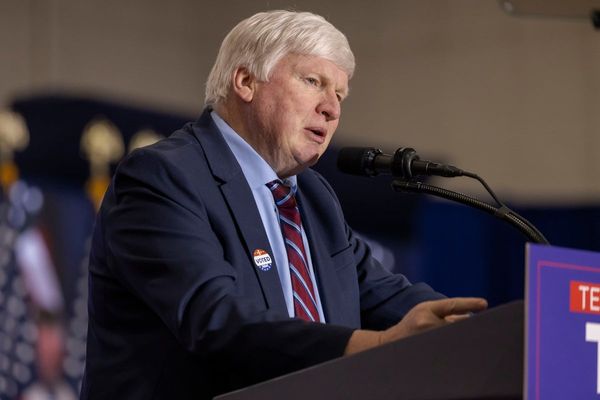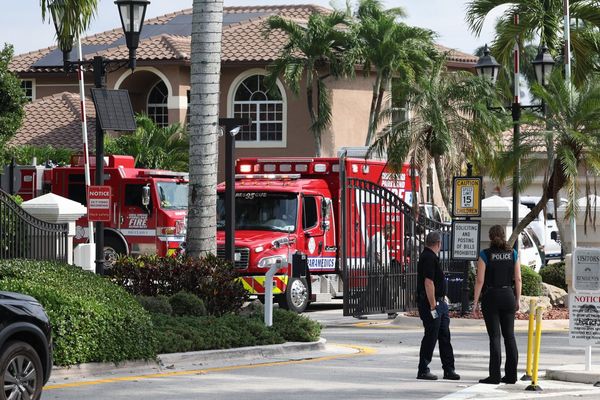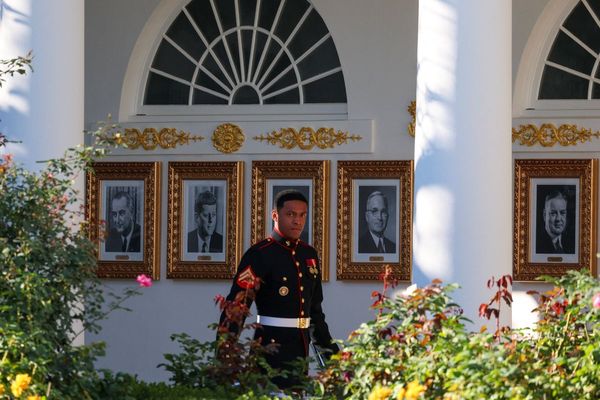
To many who knew him, TS Eliot was considered a remote and intellectually aloof man, as perhaps befitted the author of the bleak and foreboding epic The Waste Land. His contemporary, the poet Siegfried Sassoon, went as far as to describe him as “cold-storaged humanity”.
But previously unpublished letters show that the great modernist writer was actually an intensely emotional and passionate man.
The letters were addressed to Emily Hale, with whom the Nobel prize-winning poet and playwright was in love over decades, although he was a married man in Britain and she was living in America.
In one he wrote: “When I go to bed I shall imagine you kissing me; and when you take off your stocking you must imagine me kissing your dear dear feet and striving to approach your beautiful saintly soul.”
In others he told her that “you have all my love and devotion always”, that he was longing to stroke her “radiantly beautiful” forehead and that he would be “extremely jealous” of any other man who “cared for you as I have”.
Eliot wrote more than 1,100 letters to Hale between 1930 and 1957. Many date from the years in which he was in an unhappy marriage with his first wife, Vivien Haigh-Wood, which he described to a friend as “a hideous farce”.

Hale donated the correspondence to Princeton University in the 1950s with the agreement that it would remain sealed until 50 years after her death or Eliot’s, whoever survived the other. Eliot died in 1965 and Hale in 1969.
On hearing of her donation to the university, Eliot prepared an official denial, within a statement that was to be released as soon as the letters were made public. He wrote: “I was not in love with Emily Hale.”
Robert Crawford will feature many of the letters in Eliot After The Waste Land, the second volume of his biography of one of the 20th century’s most important poets, to be published this week. It reveals the public and personal experiences that inspired some of Eliot’s masterpieces, including The Waste Land and Four Quartets.
Crawford told the Observer that these letters were “shut away at Princeton until 2020, so nobody’s been able to read them”, and that he is the first biographer to be given permission to reproduce passages ahead of their planned publication online.
He believes that, through these letters, Eliot revealed what he saw as his true self: “He sees himself as an emotional person. He’s very aware that people see him as a rather cold intellectual.
“That’s the way that people often regarded TS Eliot – and still regard him. People who perhaps don’t get his poetry feel there’s a crossword puzzle aspect to it.
“But if you read it aloud, you realise that there’s tremendous emotional disturbance underneath a lot of Eliot’s poetry. Sometimes people wonder where that came from. I think it came from this sense of longing, bound up with his feelings for Emily Hale.”

Holding out no hope of divorce, Eliot remained married because of his religious faith, yet his letters reflect physical longing. He told Hale: “I resent, and always shall, every occupation and engagement – except writing verse – that takes my mind from you; yet you are always with me when I wake and when I go to bed, and I stretch out my arms to where you ought to be.”
Hale was a speech and drama teacher who got to know Eliot in Cambridge, Massachusetts, in 1912, when Eliot attended Harvard University. She was a friend of his cousin.
Crawford said that Eliot had declared his love for her in 1914, and thought that she did not reciprocate. He settled in England that year, marrying Vivien in 1915, soon afterwards realising his mistake.
Although he did not act on his desire for Hale, he dreamed that his relationship with her would one day be known, telling her: “There will be so much in existence to give a very false impression of me, and so few clues to the truth. Can I make clear to you my feeling, I wonder. I admit that it is egotistic and perhaps selfish; but is it not natural, when one has had to live in a mask all one’s life, to be able to hope that some day people can know the truth… I have again and again seen the impression I have made, and have longed to be able to cry ‘no you are all wrong about me, it isn’t like that at all’.”
Crawford said: “He comes through as a much more emotional and passionate person than people have given him credit for. The letters to Emily give us a remarkable insight into Eliot.”
Vivien suffered mental illness and was committed to an asylum in 1938. After her death in 1947, Eliot did not pursue Hale, marrying Valerie Fletcher a decade later. In his 1960 statement, he recalled his realisation then that he had only been in love with “the memory” of Hale.







